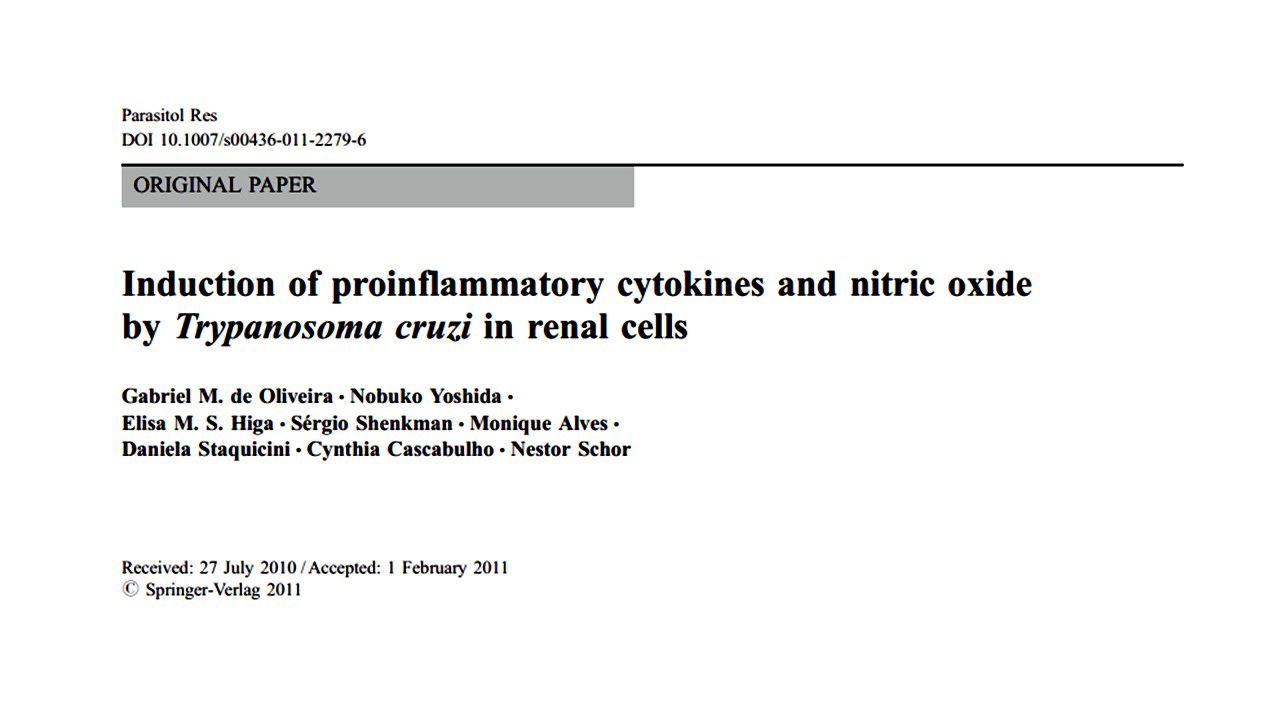Induction of proinflammatory cytokines and nitric oxide by Trypanosoma cruzi in renal cells

Chagas disease is typically associated with cardiac involvement. During the acute phase of murine infection with Trypanosoma cruzi, severe acute myocarditis can develop. Prior to cardiac alteration, however, infected mice present with renal inflammatory infiltration causing acute kidney injury due to an ischemia/reperfusion lesion. Thus, the present study was undertaken in order to evaluate whether the parasites or some of their components would directly affect renal cells. As such, this study employed kidney cell lines (mesangial, epithelial, and proximal tubular) that mimic different regions of the renal system. Mesangial cells are more resistant to infection, showing reduced parasite internalization relative to epithelial and proximal tubular cells. Upon infection, mesangial cells produced more nitric oxide, tumor factor necrosis-α, and interferon-γ and showed decreased viability when compared to the other cell lines. These results indicate that the resistance of mesangial cells to infection may be related to the increased expression of nitric oxide and proinflammatory cytokines. Conversely, the high levels of nitric oxide produced by these cells caused impairment of cell integrity and viability. Higher nitric oxide concentrations promote cellular injury and can be involved in the genesis of ischemia/reperfusion lesions in acute kidney injury.



